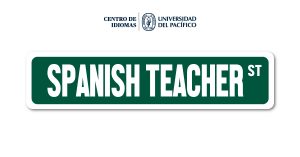In this series we have been presenting various options language teachers can pursue in order to diversify or attempt other niche opportunities available in the areas where they perform their activities. Frequently we address native Spanish speakers who teach a second language. In this occasion it is my turn to refer to the same speakers, but those teaching our own language to speakers of other tongues.
In consonance with my journalistic education and background, I don’t generally write in first person, but, in this occasion, I decided to share my own experience. I started teaching Spanish to regular Spanish speaking students, something I found fascinating. Later I tried teaching English as a Foreign Language, which was also very rewarding. Then I undertook teaching Spanish to speakers of other languages. I must tell you that this was a joy hard to relate: making other people capable to speak the language of Cervantes has always been great.
This activity, I must tell you, comes with its challenges. My harshest dare was once I had to teach Spanish to an Israeli who didn’t understand a word of this language and neither did he comprehend any English either. I had to start by teaching him the Latin alphabet. It appeared sometimes a ghastly undertaking, but yet, all in all, it was a wonderful experience.

I must caution that teaching Spanish is not easy. Spanish is not an easy language for those who did not grow up speaking it. Its grammar is complex, much more involved than the English one. The widespread idea that to know a language means that you can teach it, doesn’t hold water. You have to possess a profound and vast knowledge of it to be able to answer many of the questions your students will ask you and some things are quite difficult to explain. So many things native speakers take for granted and just accept a priori that when asked about by a foreigner you may find yourself flabbergasted.
The good part is that different languages can be taught following pretty much the same principles. There is a logic that is common to all languages and you can apply your teaching training to impart lessons in your own language. You are already familiar with the how.
I certainly recommend, though, that you study the language as much as possible. This is a very rich language and there is also a big market for it. According to Instituto Cervantes, in Spain, Spanish is the second most widely spoken native language in the world. More than 577 million people around the world speak it and by 2050 the number is expected to jump to 756 million. It is only overmatched by Mandarin Chinese. So, you can expect a lot of demand for lessons. And with modern technology, your students can be anywhere in the world. Think about it!
There are also many courses being offered for teachers who want to go thrust into teaching this wonderful language. Some can give you a working knowledge and some others can take you into camps like literature, phonology, morphology, syntax, semantics, and pragmatics. And you will not regret any of it, it will be enthralling and open a whole world of new possibilities for you.










